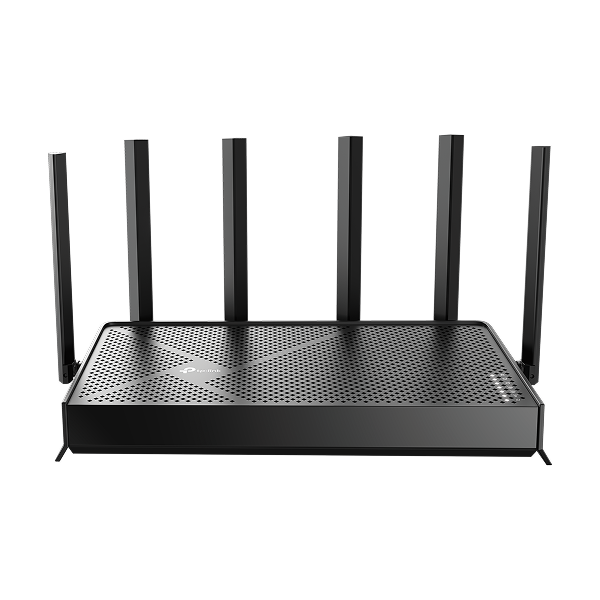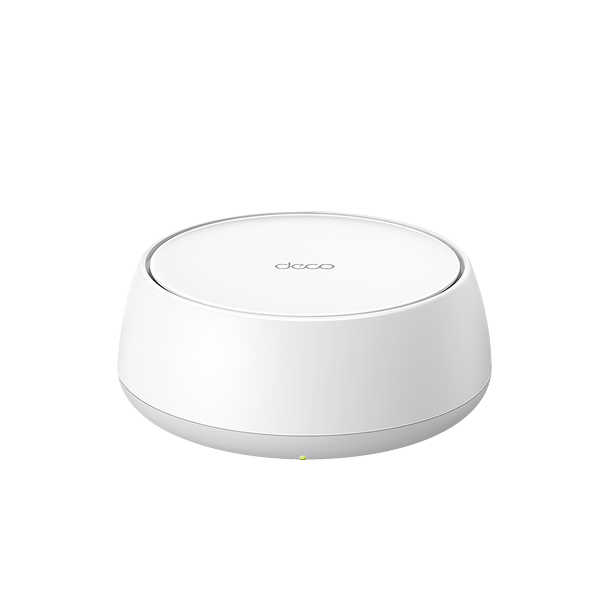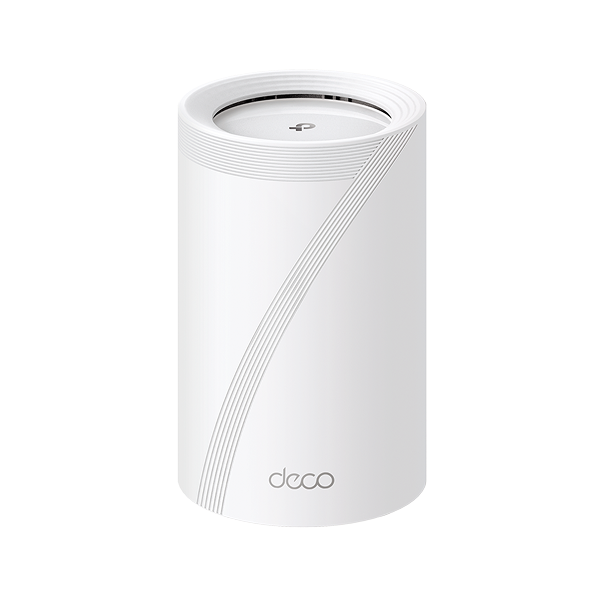What is WiFi 8:
Entering an Era of
Uncompromising Reliability
Definition
WiFi 8 (802.11bn) is the next-gen WiFi standard focused on Ultra High Reliability. Instead of chasing peak speeds, it prioritizes steady connections, stronger coverage, and smoother roaming even in busy networks.
How it works
It manages more devices at once and keeps your connection solid as you move around your home. Your devices will have less lag and more overall stability, even when farther away from your router.
Supports existing devices
It will work with current phones, laptops, and smart home gear, but you will see the biggest gains with newer WiFi 8 clients. Although newer clients get the full list of benefits, your whole home network will still improve.
Key features
Distributed Resource Units (DRUs) and Enhanced Long Range (ELR) boost both performance and range. Unequal Modulation (UEQM) helps all devices get the best possible connection. New Modulation and Coding Schemes (MCS) reduce sudden speed drops, along with many other new features.
What it does
Lower latency across the whole home
Access points coordinate for smoother connections
Better coverage for far or low-power devices
Every device gets peak performance, even under high network load
What it means for your home

- Seamless video calls
- Smooth 4K/8K Streaming

- Lag-free gaming
- Real-time VR/AR/XR

- Eliminate WiFi dead zones
- Uninterrupted roaming
WiFi 8 Solutions
It's WiFi that just works
Busy home slowdowns
With phones, laptops, wearables, gaming consoles, and smart-home gear all online at once, today's homes are saturated with concurrent connections creating airtime congestion, lag, and uneven performance. Even with WiFi's strongest bandwidth, sheer device density still causes latency spikes and slowdowns across the network.
WiFi 8 Solution
APs cooperate, not compete
Finds open lanes
Keeps speeds steady
MAPC | DSO | New MCS
New WiFi Technology
WiFi 8 features explained in simple terms
DRU (Distributed tone Resource Units)
The client device spreads its uplink tones across a wider band, increasing the overall transmitting power. DRU helps low power or faraway devices be heard cleanly by the router. Uploads (like video calls or cameras) become more reliable.
ELR (Enhanced Long Range)
More robust packet structure and coding improve coverage at the edges of your home. Devices can stay connected farther from your router. This supports stronger connections for upstairs rooms, garages, and outdoor cameras.
UEQM (Unequal Modulation)
Each client WiFi stream can run at the best rate it can manage instead of all streams using the same rate. A weak stream no longer drags the strong ones down. You get more consistent speeds when a wide variety of devices are connected.
New MCS (New Modulation and Coding Schemes)
When your signal weakens slightly, like when moving farther from your router, your device may suddenly slow down because of lag or buffering. WiFi 8 adds new MCS levels to smooth out these speed drops. That means more stable connections and consistent speeds across your whole home.
DSO (Dynamic Sub-band Operation)
Currently devices get fixed chunks of bandwidth even if they do not need it, which wastes capacity and causes congestion. DSO lets the router assign channels more precisely based on each device’s actual needs. This smarter channel frees up space for other traffic, reduces slowdowns, and improves performance across the entire network.
NPCA (Non-Primary Channel Access)
Most devices today can only transmit on the router's main channel, even if nearby channels are completely clear. NPCA allows devices to use alternate sub-channels when the main one is busy. This helps avoid traffic jams, reduce delays, and keeps your connection fast even when the network is congested.
Improved Seamless Roaming
Move from room to room without losing your connection. Your devices automatically hand-off between access points without a discrete disconnect/reconnect, supporting a continuous connection. You get no call drops, no frozen video, and no interruptions.
Multi-AP (Access Point) Coordination
WiFi 8 APs (including routers, mesh nodes, and range extenders) align timing, steer signals with precision, and adjust power to reduce overlap. This coordination keeps interference low and speeds steady in mesh setups or homes with multiple access points.
WiFi 8 vs WiFi 7:
What's New
Multi-AP coordination improves consistency across your home
Seamless roaming reduces drops while moving
ELR & DRU strengthen far edge coverage and uplink
NPCA & DSO avoid busy air for steadier speeds
Better stability under load with smarter scheduling
Smoother gaming and streaming with lower latency
What's Different from the Previous Generations?
Feature
WiFi 8
WiFi 7
WiFi 6
WiFi 5
WiFi 4
Maximum Channel Bandwidth (MHz)
320
320
160
160
40
Frequency Bands (GHz)
2.4, 5 and 6
2.4, 5 and 6
2.4, 5 and 6
5
2.4 and 5
Max PHY rate
2880 Mbps x16 = 46 Gbps
2880 Mbps x16 = 46 Gbps
1200 Mbps x8 = 9.6 Gbps
433 Mbps x8 = 3.4 Gbps
150 Mbps x4 = 600 Mbps
Modulation
4096 QAM
4096 QAM
1024 QAM
256 QAM
64 QAM
Spatial Streams
16
16
8
4
4
MU-MIMO
UL & DL
UL & DL
UL & DL
DL only
No
Target Wake Time (TWT)
Coordinated
Restricted
Individual, broadcast
No
No
OFDMA (# RU per STA)
Yes (multiple)
Yes (multiple)
Yes (single)
No
No
Multi Link Operation
Yes
Yes
No
No
No
Multi-AP Coordination
Yes
No
No
No
No
DSO/NPCA
Yes
No
No
No
No
DRU/ELR
Yes
No
No
No
No
IEEE Standard
11bn
11be
11ax
11ac
11n
Notes: Values are typical maxima and feature availability can vary by device and region. Data reflects the high level evolution from WiFi 4 through WiFi 8.
Should you wait for WiFi 8?
If you are using a WiFi 5 or WiFi 6 router, upgrading to WiFi 7 can already make a significant difference. You will get faster speeds, better coverage, and lower latency throughout your home, which helps with everything from 4K and 8K streaming to video calls. If your current setup is not keeping up, there is real value in upgrading now instead of waiting.
FAQ
What is WiFi 8?
The next WiFi generation (IEEE 802.11bn) is focused on Ultra-High Reliability for steadier performance, better roaming, and lower latency.
When will WiFi 8 products become available?
Early products may appear ahead of final ratification; availability depends on certification and regional rules.
Does WiFi 8 add a new band?
It uses 2.4/5/6 GHz and focuses on reliability features rather than new spectrum.
How does WiFi 8 help video calls?
WiFi 8 helps improve coverage performance. lower latency, and seamless roaming reduce freezes, drops, and "robot voice."
Is WiFi 8 faster than WiFi 7?
Peak theoretical speeds are the same; the real difference is consistency and responsiveness.
Will older devices benefit from WiFi 8?
Older devices can still benefit from a WiFi 8 router. While they will connect using their own WiFi version, they can see more stable speeds, better coverage, and fewer slowdowns due to WiFi 8's smarter traffic and interference management.
What if my internet plan is not multi-gig speed?
Many pain points (e.g., lag, buffering, drops) come from the in-home WiFi, not the ISP line. WiFi 8's reliability features help even on 100-500 Mbps plans.
Why TP-Link?
Products & Services You Can Trust
We offer a comprehensive range of products and services designed to meet the evolving needs of customers. We are a leading global provider of networking and smart home products and solutions, trusted by millions of families and businesses worldwide.




